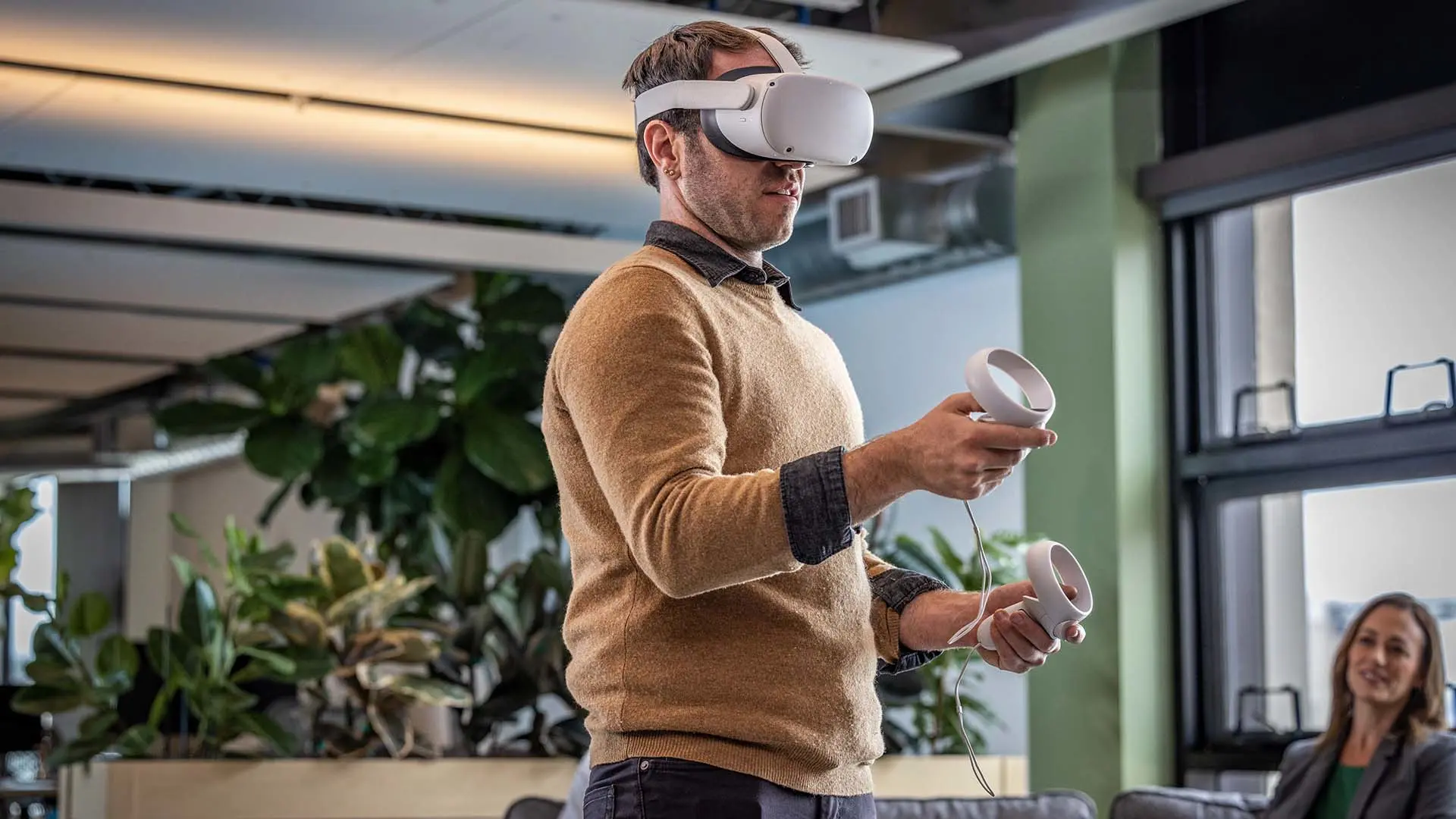& Construction

Integrated BIM tools, including Revit, AutoCAD, and Civil 3D
& Manufacturing

Professional CAD/CAM tools built on Inventor and AutoCAD
In a world where tech giants, robots, and AI are transforming daily life, the construction industry is often seen as favoring tradition over innovation, with bulldozers and cranes dominating the scene. Moving further into the 21st century, however, that notion isn’t just being challenged—it’s becoming an antiquated stereotype.
The AECO industry is leading a digital transformation, rapidly innovating to reshape the future of construction. Thanks to advanced solutions like building information modeling (BIM) and AI-driven machine learning, the industry and its workforce are entering into a new era of efficiency, sustainability, and intelligence.
Consider the leap in offsite, assembly-line modular construction, made possible by tools such as Autodesk Informed Design for Revit. A prime example is Factory_OS in Vallejo, California, which is already leveraging modular construction technology to speed up the building process, cut costs, and minimize waste, all while providing stable jobs for construction workers. The company’s initiative, Project Phoenix in West Oakland, California, is a direct result of this approach, using Autodesk research to create affordable housing that’s both cost-effective and environmentally sustainable, significantly reducing carbon emissions.
And this is just the tip of the iceberg. Looking ahead, the possibilities seem as boundless as access to information did when the internet first came on the scene in the 1990s. Let’s look at the technologies fueling the future of construction.
At the heart of modern construction is BIM, which isn’t just a tool; it’s a game changer. BIM provides a centralized database for a single shared model, effectively addressing the limitations of traditional methods of building so teams can work together no matter where they are.
BIM’s capabilities are further amplified when combined with the Internet of Things (IoT)—a network of interconnected devices—and artificial intelligence (AI). By using AI to extract and process information from a vast set of IoT sources, BIM centralizes information, enhances communication, and enables collaboration across teams. It also helps in selecting the best eco-friendly materials and designs based on user preferences. Together, BIM and AI create a more efficient, sustainable, and intelligent construction process, setting a new standard for the industry.
Artificial intelligence and machine learning have transitioned from sci-fi fantasies to real-world applications in construction. From predictive analytics that foresee project risks to AI-driven tools that optimize building plans, these technologies are front and center, and they’re making a significant impact on the industry.
Machine learning models, fueled by data from IoT sensors, are particularly impressive. They help optimize space usage and predict equipment failures, which reduces downtime and maintenance costs. Real-time location systems (RTLS), which track the movement of people and equipment, ensure operations run smoothly and efficiently. These advancements are reshaping the construction landscape and also helping other industries manage resources more effectively while staying ahead of demand curves.
While AI’s potential in construction is just beginning to be realized, the construction site of the future is already being shaped by robotics and automation. At the Toyota Research Institute, for example, researchers are employing “diffusion policy,” an advanced AI method that helps robots learn complex tasks. This contributes to developing large behavior models (LBMs), which enhance robots’ ability to perform a wide range of activities. As these technologies integrate further into construction, the focus shifts from fears of job loss to the growing demand for skilled workers who can operate, maintain, and collaborate with these machines.
The construction industry is one of the largest global sectors and the largest consumer of raw materials, making it essential for efficiency to be improved to meet sustainability standards. Robots and automation are enhancing productivity and safety and also contributing to greener building practices. Autonomous machinery, 3D printing, and robotic arms are reducing risky and labor-intensive tasks while improving construction timelines. These technologies are reshaping how buildings are constructed, making the process faster, safer, more precise, and more sustainable than traditional methods.
Immersive technologies such as augmented reality (AR), virtual reality (VR), and extended reality (XR) are revolutionizing the way construction projects are visualized and interacted with. These tools are enhancing accuracy and design efficiency for onsite tasks and allowing stakeholders to see and interact with buildings before they’re even built.
AR overlays digital data onto the physical world, while VR creates entirely virtual environments for design visualization, training, and safety simulations. XR blends both and provides a combination of real and virtual experiences, pushing the boundaries of how construction projects are planned, executed, and maintained. While these technologies are not yet fully standardized in the industry, their rise is opening up new opportunities for job creation and innovation, promising an exciting future for construction.
Unsurprisingly, drones have become indispensable tools on construction sites. While this isn’t exactly breaking news, given their established roles in military, commercial, and recreational contexts, their impact on construction is significant. These unmanned aerial vehicles (UAVs), particularly the autonomous ones, operate without direct human intervention, effectively making them part of the robotic workforce.
Drones in construction typically fall into five key categories: site analysis, planning and design, asset inventory, project reporting and collaboration, and dispute resolution. These UAVs provide real-time data and streamline various aspects of construction, making it easier to manage projects and ensure they stay on track.
Sustainability is no longer just a buzzword in construction; it’s guiding the future of construction industry practices. The built environment is a significant contributor to climate change, so shifting toward more sustainable practices is essential. According to the US Environmental Protection Agency, sustainable construction involves creating structures and using processes that are environmentally responsible and resource-efficient throughout a building’s lifecycle.
One approach that’s been gaining traction is prefabrication (prefab), which aligns with sustainability goals by reducing material waste and promoting efficiency. Initiatives such as Project Phoenix illustrate how modular construction can address environmental and housing challenges, showcasing the evolving potential of prefab technology.
As the industry adapts to climate change, carbon-neutral buildings and passive designs are becoming the norm. The push toward more sustainable building methods is driven by innovations in materials, the circular economy, and regulatory pressures. As the industry embraces sustainability to combat climate change, workforce practices are also evolving to support this transformation.
The construction industry isn’t just technologically evolving; workforce practices are also changing and becoming more inclusive. Integrated project delivery (IPD), lean construction, and workforce development are shaping the future of construction industry practices.
While emerging technologies, such as robots and advanced machinery, are driving progress, their effectiveness relies on employing skilled human operators—equipping the workforce with a digital-first mindset is crucial for the industry’s advancement. Diversity and inclusion are also playing a key role, as a diverse workforce brings new perspectives and ideas that drive innovation. As construction, manufacturing, and building operations become more digital, they’ll need new, tech-savvy workers to steer the changes.
Future-proofing projects against the uncertainties of climate change and other global challenges is more important than ever, and the construction industry must adapt. Resilient supply chains, cloud-based solutions, and effective collaboration are becoming critical for ensuring that construction projects remain responsive to shifting markets.
The construction industry’s future is bright, but success in this new era demands projects that are both resilient and collaborative. Methodologies such as BIM, when combined with AI-powered solutions, offer a blueprint for adaptability. These technologies ensure that projects can evolve with the environment, technologies, and market conditions.
As an Industry 4.0 landscape develops, populated with robots, IoT, and advanced analytics, it’s essential for industry leaders to maintain a beginner’s mindset. The demand for resilience and collaboration will only continue to grow, and embracing this mindset will unlock limitless possibilities and drive the industry forward. The future of the construction industry isn’t just about putting up better buildings—it’s about creating a world where innovation and sustainability go hand in hand, setting the stage for an industry that’s smarter, greener, more flexible, and ready for whatever comes next.
This article has been updated. It was originally published in August 2015. Phil Bernstein contributed.
Elizabeth Rosselle is a freelance journalist, copywriter, and designer who splits her time between San Francisco and Bali, Indonesia.
AECO
AECO
AECO
Image created in Midjourney by Stephen Coorlas.










